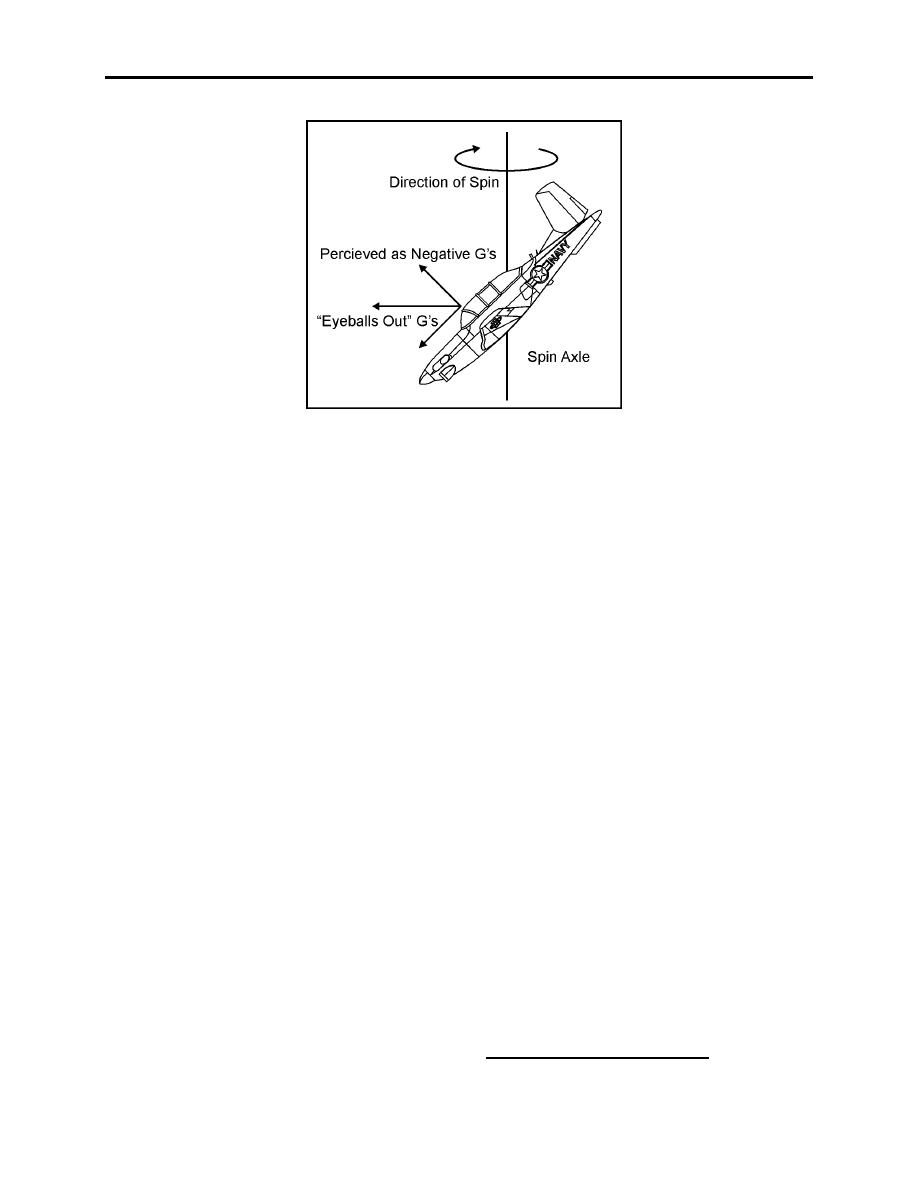 |
|||
|
|
|||
|
|
|||
| ||||||||||
|
|  CHAPTER ONE
T-34C OUT-OF-CONTROL FLIGHT
Figure 1-11 "G" Forces
The problem is further compounded when roll, pitch, and yaw oscillations cause variations in the
direction and magnitude of "G" forces and literally tumble the pilot about the cockpit.
Since outside visual and sensory cues cannot be relied upon to determine the mode of flight,
intuitive responses must be ignored. The ONLY satisfactory means to analyze the situation and
thereby recover from OCF properly is by referencing your flight instruments. While it is true the
AOA, airspeed indicator, and the turn needle are sufficient to provide all the information
necessary for recognition and recovery; nevertheless, the altimeter should not be ignored because
of the obvious safety factor. In fact, you may want to consider altitude first!
The AOA indicator primarily enables you to determine whether the flight mode is upright or
inverted. The instrument will be pegged at 30 units if upright and 0 - 3 units if inverted. If the
AOA indicator is indicating neither of the above indications, the aircraft has not yet entered a
Steady-State Spin.
Airspeed in a Steady-State Spin will either be stable or it will oscillate above and below a
constant airspeed. Any airspeed above or below the characteristic range (80 - 100 KIAS) or a
steadily increasing airspeed indicates the aircraft has not yet reached a Steady-State Spin.
Instead, airspeed outside the characteristic indicates the aircraft is in some other flight mode that
will not develop into a spin, such as a high-speed spiral.
The turn needle will be fully pegged in the direction of the spin, but it does not provide other
information about the phase of flight. For example, the needle may also be fully pegged during a
PSG or a high-speed spiral! The turn needle, therefore, can only be relied on to indicate the
direction of rotation since the pilot may misinterpret visual cues during the extreme
disorientation that often accompanies OCF.
You must reference the altimeter to determine how much "time" is available for recovery. If you
have not recovered by 5000 feet AGL in the T-34C, bailout is your only alternative!
INTRODUCTIONS AND SPINS 1-11
|
|
Privacy Statement - Press Release - Copyright Information. - Contact Us |